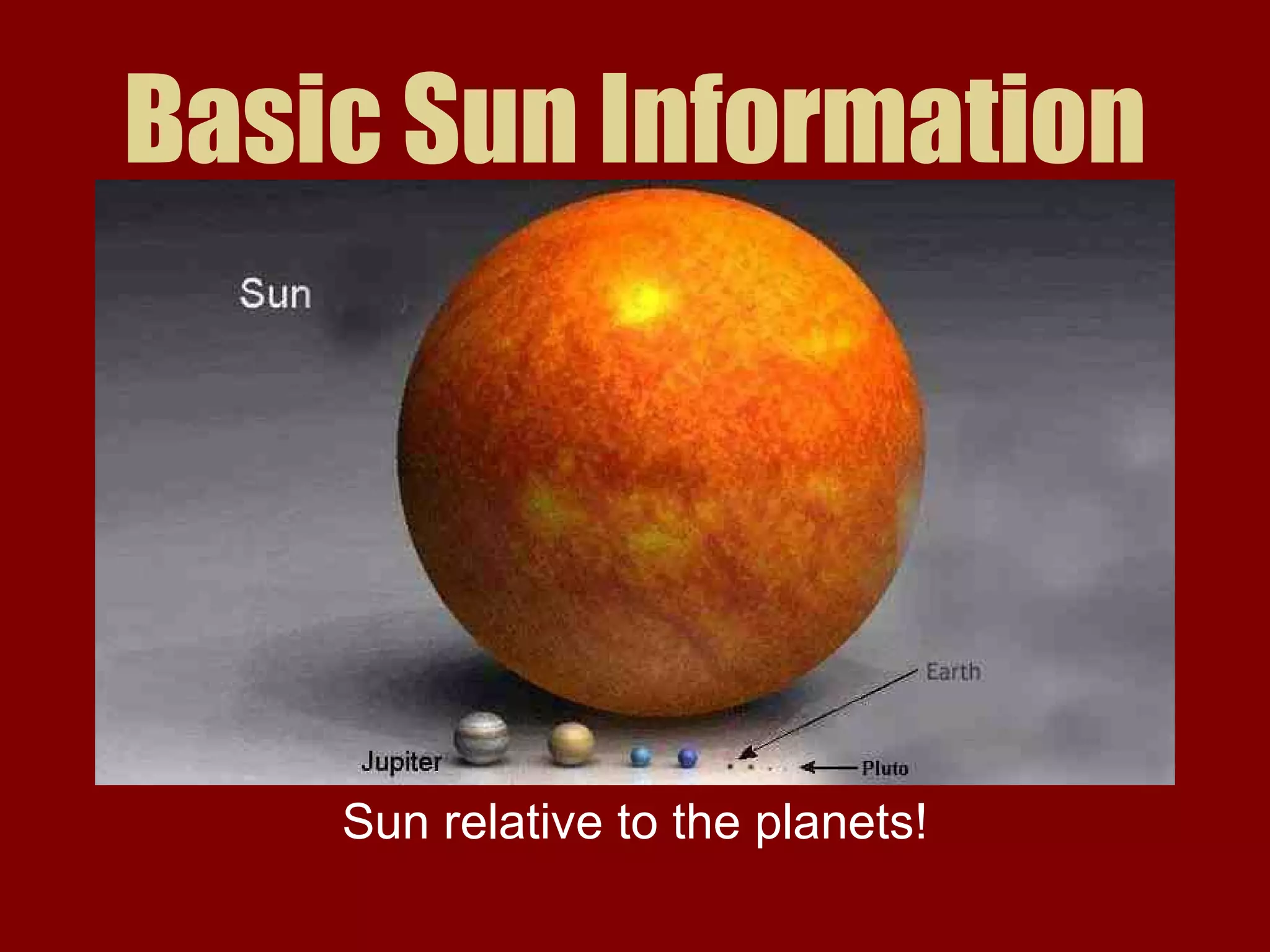The document provides information about the sun, including that it is an average sized star located in one arm of the Milky Way galaxy. It is made up primarily of hydrogen and helium. The sun is very important to Earth as it provides heat, light and keeps Earth and other planets in orbit. It undergoes a solar cycle every 11 years where its magnetic field flips.











